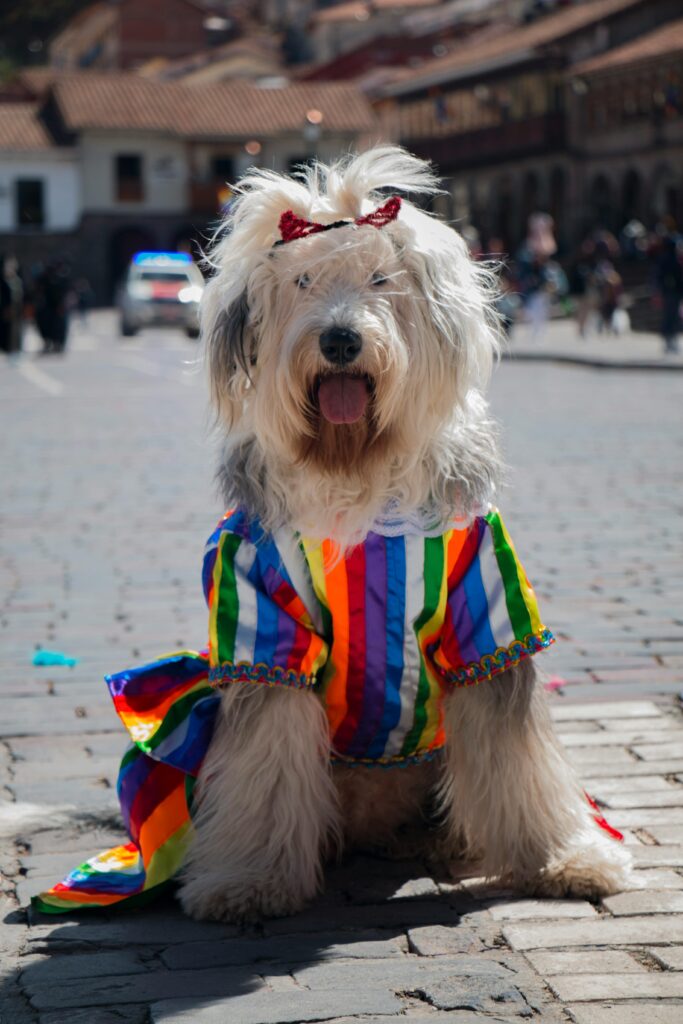The Raw and Freeze-Dried Food Trend for Dogs (Raw Kefir, Freeze-Dried Treats, Pupsicle, Air-Dried Dog Food, Freeze-Dried Liver)
Raw and Freeze-Dried Dog Food Trends: Over the past decade, dog owners have become more conscious about their pets’ health and diet. One noticeable trend that has gained immense popularity is the shift towards raw and freeze-dried food for dogs. As people continue to seek healthier alternatives for their furry friends, raw kefir, freeze-dried treats, pupsicles, air-dried dog food, and freeze-dried liver have emerged as popular choices.
This trend is not only a reflection of pet parents’ desire to feed their dogs natural, minimally processed food but also a response to growing concerns about the long-term effects of conventional kibble. In this article, we will explore these exciting raw and freeze-dried food trends and why they are becoming increasingly popular among pet owners.
What is Raw and Freeze-Dried Dog Food?
Before diving into specific food items, it’s important to understand what raw and freeze-dried dog food is. Raw food diets for dogs often consist of fresh meat, bones, and organs, providing a diet that mirrors what dogs’ ancestors (wolves) would have eaten in the wild. Freeze-dried dog food is a more convenient version of raw food. The freeze-drying process removes moisture from raw ingredients, preserving their nutrients and flavors without the need for refrigeration.
The goal of these diets is to offer high-quality, nutrient-rich food that can benefit dogs in terms of better digestion, improved skin and coat health, and increased energy.
1.Raw and Freeze-Dried Dog Food Trends: Raw Kefir for Dog
Raw kefir is a fermented drink made from milk that is packed with probiotics. For humans, it’s a well-known health food, but did you know that it’s also beneficial for dogs?
Health Benefits:
Raw kefir can improve your dog’s gut health by introducing beneficial bacteria. A healthy gut is essential for digestion and immune function, and kefir can help maintain this balance. Dogs who suffer from allergies, gastrointestinal issues, or yeast infections may particularly benefit from raw kefir. Moreover, the calcium and proteins found in kefir can help maintain strong bones and muscles.
How to Serve:
You can give your dog raw kefir directly by adding a small amount (1-2 tablespoons) to their meals. It can also be used as a treat on its own or mixed with other food items like kibble or raw diets.
Why Pet Owners Love It:
One of the main reasons why kefir has gained popularity among pet owners is due to its ability to act as a natural, whole-food probiotic. Unlike many commercial probiotics, raw kefir is free from synthetic additives and chemicals, making it a clean, holistic choice for dogs. It also supports overall digestive health and can help soothe upset stomachs.
2. Raw and Freeze-Dried Dog Food Trends: Freeze-Dried Treats
Freeze-dried dog treats are a healthy and convenient alternative to traditional snacks. Made from raw ingredients like meat, fruits, and vegetables, freeze-dried treats retain their nutrients while offering a shelf-stable product.
Health Benefits:
Freeze-dried treats are minimally processed, so they retain most of the natural nutrients found in raw ingredients. This makes them an excellent choice for dogs with food sensitivities or allergies. They are also rich in protein, vitamins, and minerals, providing a balanced snack that supports your dog’s overall health.
Raw and Freeze-Dried Dog Food Trends:Popular Varieties
- Chicken hearts: High in protein and low in fat, chicken hearts are a favorite among dogs and provide essential amino acids.
- Beef liver: Rich in iron and B vitamins, beef liver treats are great for energy and overall vitality.
- Salmon: Loaded with omega-3 fatty acids, freeze-dried salmon treats can improve your dog’s skin and coat health.
Why Pet Owners Love It:
Freeze-dried treats are not only healthy but also convenient. They don’t require refrigeration, making them easy to store and carry. These treats are lightweight, making them perfect for hiking, traveling, or simply as a rewarding snack during training sessions.
3.Raw and Freeze-Dried Dog Food Trends: PupsicleFrozen Dog Treats
A pupsicle is a frozen treat designed specifically for dogs. Think of it as a popsicle, but with ingredients safe and nutritious for your pet.
Health Benefits:
Pupsicles are typically made from natural ingredients like fruits, vegetables, peanut butter, or yogurt. They can provide hydration, especially during the hot summer months, and they offer a fun and interactive way for dogs to cool down.
How to Make Pupsicles:
You can easily make pupsicles at home by blending your dog’s favorite ingredients and freezing them in an ice tray or molds. Here’s a simple recipe:
Ingredients:
- 1 ripe banana
- 1 tablespoon of peanut butter (unsweetened)
- 1/2 cup of plain yogurt
Instructions:
- Mash the banana and mix it with peanut butter and yogurt.
- Pour the mixture into molds or an ice cube tray.
- Freeze for a few hours and serve.
Why Pet Owners Love It:
Pupsicles are an affordable and customizable option. You can tailor the recipe to your dog’s preferences and dietary needs. It’s also a fantastic way to encourage hydration, especially if your dog doesn’t drink much water in the heat.
4. Raw and Freeze-Dried Dog Food Trends: Air-Dried Dog Food
Air-dried dog food is a growing trend for pet owners who want to provide high-quality, minimally processed food without the hassle of raw feeding. It is made by slowly drying raw ingredients at low temperatures, removing moisture while preserving nutrients.
Health Benefits:
Air-dried dog food retains all the nutrients found in raw ingredients, including proteins, vitamins, and minerals. The gentle drying process ensures that the food stays nutrient-rich while being free from artificial preservatives, colors, and fillers.
Why Pet Owners Love It:
This food type offers convenience without compromising on nutrition. Air-dried dog food doesn’t require refrigeration, and it has a long shelf life. It’s easy to store and serve, making it a popular choice for busy pet owners who want the benefits of raw feeding but need a more practical solution.
5. Raw and Freeze-Dried Dog Food Trends: Freeze-Dried Liver
Freeze-dried liver is one of the most popular treats among dog owners due to its high nutritional content and palatability. Freeze-drying preserves the natural nutrients in liver, making it a healthy and convenient option for pet owners.
Health Benefits:
Liver is packed with essential nutrients, including vitamin A, B vitamins, iron, copper, and zinc. These nutrients are crucial for maintaining healthy skin, vision, and a robust immune system. Liver is also a rich source of protein, supporting muscle development and energy levels in dogs.
How to Serve:
Freeze-dried liver treats can be served as a snack or training reward. Because they are lightweight and shelf-stable, they can be easily carried in a pocket or bag.
Why Pet Owners Love It:
Dogs absolutely love the taste of liver, and pet owners love that it’s a nutritious and natural treat. It’s also easy to store, has a long shelf life, and is ideal for dogs with sensitive stomachs or allergies to other proteins.
Why are Raw and Freeze-Dried Foods Trending?
The rise in popularity of raw and freeze-dried dog food can be attributed to a few key factors:
- Health Concerns: Pet owners are becoming more educated about the ingredients in commercial dog food, many of which are highly processed and filled with fillers. Raw and freeze-dried diets offer a more natural and wholesome alternative.
- Improved Pet Health: Many pet owners report significant improvements in their dog’s health after switching to a raw or freeze-dried diet. These benefits include better digestion, shinier coats, more energy, and fewer allergies.
- Convenience: While raw feeding can be time-consuming and messy, freeze-dried and air-dried alternatives offer a convenient solution without sacrificing the benefits of a raw diet.
- Better for Allergies: Dogs with food sensitivities or allergies often do better on raw or freeze-dried diets because they contain fewer artificial ingredients and allergens.
- Pet Wellness Movement: Just as people are becoming more health-conscious, they are extending that mindset to their pets. Pet owners want to feed their dogs the best possible diet to ensure long, healthy lives.
Raw and Freeze-Dried Dog Food Trends:Questions and Answers
1. Is raw kefir safe for dogs?
Yes, raw kefir is generally safe for dogs when given in moderation. It is packed with probiotics that promote gut health and can be especially beneficial for dogs with digestive issues. However, always consult with your vet before introducing new foods to your dog’s diet.
2. How do freeze-dried treats differ from regular dog treats?
Freeze-dried treats are made from raw ingredients that have been freeze-dried to remove moisture, preserving nutrients without the need for preservatives. Regular dog treats are often baked or processed, which can reduce their nutritional value and may contain artificial additives.
3. Can I make pupsicles at home?
Yes, pupsicles are easy to make at home using dog-safe ingredients like peanut butter, yogurt, and fruits. Just blend the ingredients, pour into molds, and freeze. Pupsicles are a great way to keep your dog hydrated and cool in the summer.
4. What’s the difference between air-dried and freeze-dried dog food?
Both air-dried and freeze-dried dog foods remove moisture from raw ingredients while preserving nutrients. However, air-drying is a slower process that uses low heat, while freeze-drying involves freezing the food and then removing the ice crystals. Freeze-dried food retains more of the original texture, while air-dried food can be slightly denser.
5. Are freeze-dried liver treats good for puppies?
Yes, freeze-dried liver treats can be given to puppies in moderation. They are packed with essential nutrients like vitamins A and B, as well as iron, which are important for growth and development. However, liver is rich, so it’s best to start with small portions.
References:
- American Kennel Club: Provides insights into healthy diets for dogs, including raw and freeze-dried options.
- Dogs Naturally Magazine: Offers comprehensive guides on raw feeding and the benefits of raw kefir, freeze-dried treats, and more.
- PetMD: Discusses the benefits and potential risks of raw and freeze-dried diets for dogs, with input from veterinarians.
This article offers a comprehensive overview of raw and freeze-dried dog food trends and provides valuable insights into why these foods are gaining popularity among dog owners. By focusing on health benefits, convenience, and addressing common questions.


